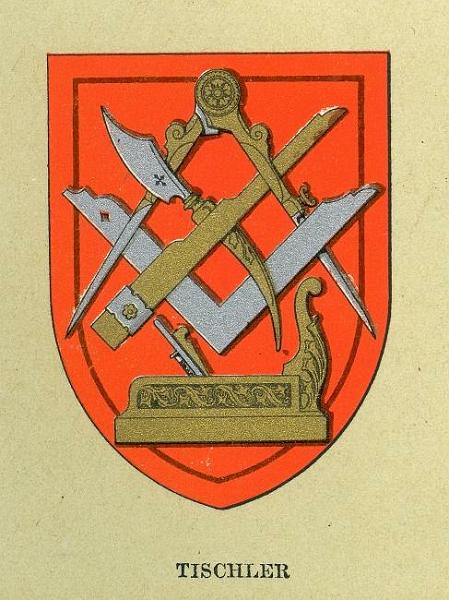
One of the signs that this near-vanished square was an important part of the woodworker’s kit is that it was used in signs and heraldry related to the craft.
The above image is the Cabinetmakers Coat of arms of the Vienna Commercial Co-operatives, circa 1900 (thanks to Jeff Burks for digging these images up). What makes this image particularly interesting is the metal sleeve around the blade of the square.
Could the metal sleeve be movable? Perhaps secured by a screw at the end of the brass flower? If so, it might be the long-lost ancestor to the Veritas Sliding Square.
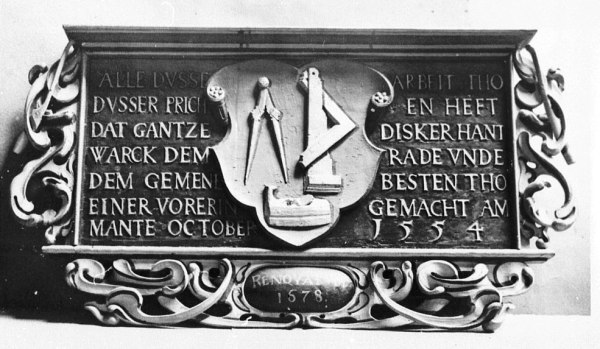
Exhibit B: This is a 1554 wooden sign commemorating work done by the cabinetmakers guild in the Church of the Brethren; the photo is from the microfilm collection at the Städtisches Museum in the city of Braunschweig.
The Melencolia square is shown intertwined with a try square, next to a compass and above a plane – three of the most iconic early woodworking tools.
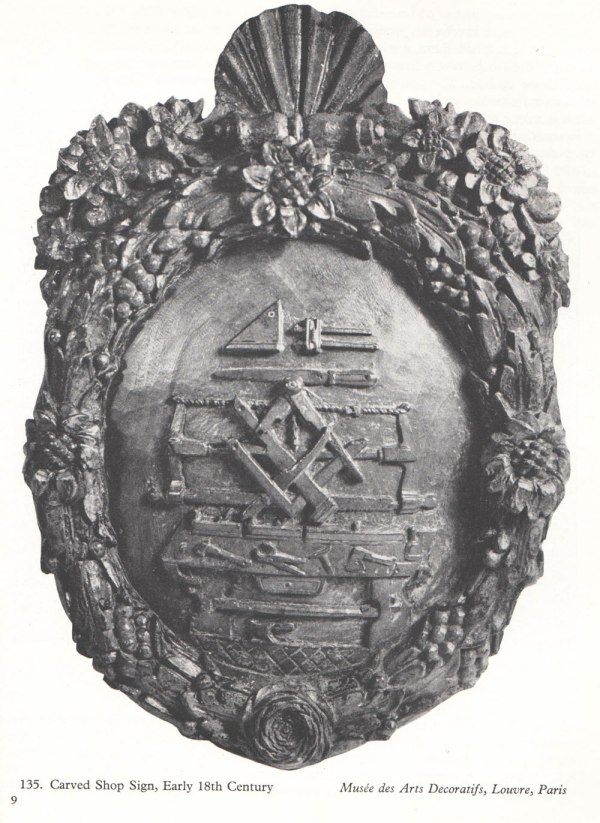
Exhibit C: An 18th-century shop sign from France. The square is crossed with a compass and try square. Thanks to Maurie Pommier, author of “Grandpa’s Workshop,” for pointing out this one, which is featured in W.L. Goodman’s “The History of Woodworking Tools.” This image was hiding in the section on saws.
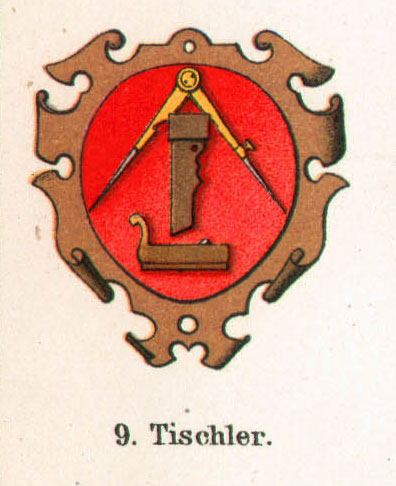
And lastly, here is the square shown in the coat of arms for the joiners guild in Germany during the last decade of the 19th century. In this image there is no try square – only a compass, plane and the Melencolia square.
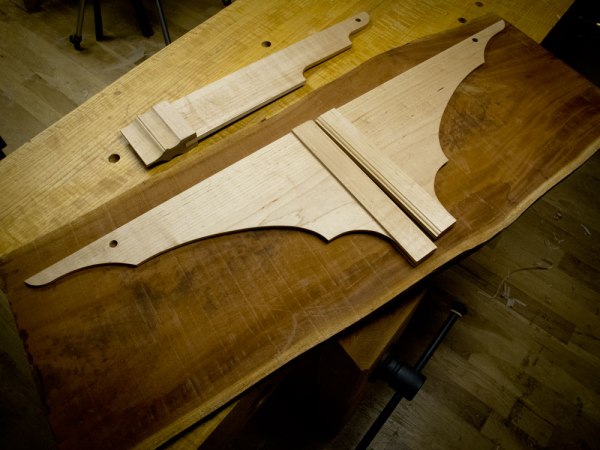
Next up: The easy-to-make Wierix Square. Or, as I call it, “Die Fledermaus.”
— Christopher Schwarz
The other articles in this series:
• The Melencolia I Square, Part 1
• Melencolia Square, Part 2: An Angular English Friend
• Melencolia Square, Part 3: Construction